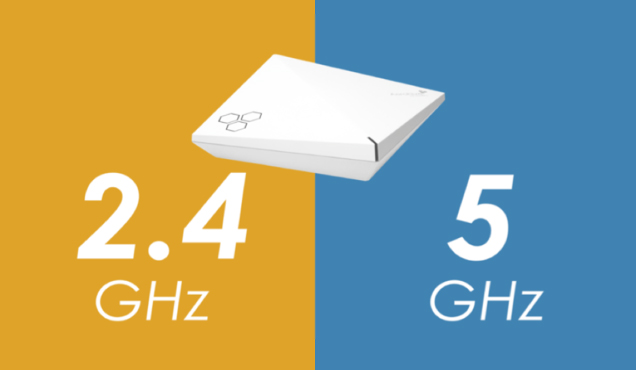
Do the terms ‘802.11ac’, ‘Wave 2’ and ‘5GHz’ sound familiar? They are often associated with shiny new phones and Access Points. Conversely, ‘2.4GHz’ may invoke images of old barcode scanners and legacy home routers. Is this a fair perception?
It’s been apparent for a couple of years that the 2.4GHz band of Wi-Fi is getting more crowded. Allowing users to share this spectrum at the same time is the thing that made it so useful, but at the moment, the same feature unfortunately starts to make the spectrum unusable in several situations.
In 2016, Apple and Cisco issued a paper in regards to the best network practices for enterprises where they stated that the use of 2.4GHz band is not considered suitable for business and/or mission critical enterprise applications. They also suggested to businesses to change to 5GHz band and replace the 2.4GHz.
In 2014, the Wi-Fi Alliance analysed the Wi-Fi enabled devices in the world, plus the amount of selling and shipping of sales each year. The results showed that the number of new devices is going to continuously grow at a fast pace. Most of the devices sold today can work with both 2.4GHz and 5GHz spectrum, but they are set to default to use 2.4GHz spectrum. The reason behind devices being set as default to using 2.4GHz is to enable usability of these devices on older Wi-Fi routers. This unfortunately leads to creating an increasing demand in only one part of the spectrum. Hence, there is no doubt the bandwidth can get full.
What is the solution that the market has found?
Wi-Fi/802.11 started off in 1997 and it ran exclusively on 2.4GHz. Two years later, in 1999, 802.11a has launched and 5GHz became an alternative. Between 2009 and 2017, as specified above, most devices have been manufactured with 5GHz support. However, this is set to continue with 5GHz-only devices (802.11ac) which is seeing a rapid adoption rate.
Some of the devices like Amazon Alexa, Apple HomeKit, etc. connect to Wi-Fi by exclusively using 2.4GHz. This might be a sign 2.4GHz is not dying. Sadly, non-Wi-Fi equipment interfere on the 2.4GHz frequency and makes it more congested than ever before. For this reason, Wi-Fi moves towards a 5GHz-only future.
What is the difference between 2.4GHz and 5GHz?
Most of the existent devices rely on 2.4GHz connections even though they have 5GHz support. 2.4GHz connection is a shorter, denser frequency which is better for range and in case there are walls between the router and the user. Having numerous devices using the same frequency impacts the overall quality and result in dropped connection occasionally.
Changing to 5GHZ connection results in less interference and there is a stronger signal, meaning a more reliable and constant connection and faster data transfer. The drawback of 5GHz is its shorter range in comparison to 2.4GHz and has more difficulty penetrating obstacles like walls or windows.
To conclude, 2.4GHz has better range but loads of interference while 5GHz has a shorter range with less interference.
The Future
The explosion of IoT has increased the dependency on 2.4GHz and some devices are still produced to connect to 2.4GHz frequency only. Manufacturers are doing this because chipsets are cheaper and often provide better connectivity range compared to 5GHz.
As devices start to focus on supporting both frequencies (2.4GHz and 5GHz) or 5GHz-only, we could see 5GHz becoming the cheaper alternative.
To answer the question of this article, we can safely say 2.4GHz is not dead but will be soon. However, technology needs to continuously find new solutions as the 5GHz spectrum can end up in the same place 2.4GHz did, meaning that if all devices move to using 5GHz, it may also get overcrowded.
For the future, experts advise to make sure you purchase devices that support 5GHz (802.11ac). Also, SDR can improve the operational efficiency and performance of a wireless network, and can also ease the transition to 5GHz-only frequency, so it may be worth investing in.
